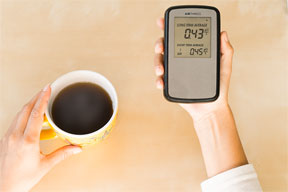 (NewsUSA)
(NewsUSA) – Sponsored News – In American homes, smoke detectors and carbon monoxide detectors are common devices. But while homeowners may think that these monitors are sufficient for ensuring their families’ wellness and safety, there is another gas that needs to be detected which is equally as important for health and wellness: radon.
– Sponsored News – In American homes, smoke detectors and carbon monoxide detectors are common devices. But while homeowners may think that these monitors are sufficient for ensuring their families’ wellness and safety, there is another gas that needs to be detected which is equally as important for health and wellness: radon.
Radon exposure is the leading cause of lung cancer among non-smokers and the second leading cause for smokers, claiming the lives of approximately 21,000 Americans each year. That’s more than five times the number of deaths attributed annually to carbon monoxide poisoning and house fires.
Radon is an invisible, odorless, tasteless gas that enters buildings through cracks in floors and walls, construction joints, and gaps in foundations around pipes, wires or pumps. The good news is that the Corentium Home by Airthings makes it easy to detect and monitor radon.
For most U.S. homeowners, radon testing is a faint memory associated with the sale or purchase of a home. But due to the fluctuating nature of radon based on location and time of year, a single radon test is insufficient and will not guarantee the health and safety of your family. Continuous monitoring is essential.
In 2015, the Environmental Protection Agency and 11 partner organizations launched the National Radon Action Plan, aimed at reducing harmful radon levels in five million homes, apartments, schools and childcare centers nationwide, thus saving 3,200 lives annually by 2020. This effort is a step in the direction of creating radon-safe environments for Americans; however, all homeowners in the country can do something today to take control of their own air quality.
“The Corentium Home by Airthings radon detector empowers homeowners to measure radon levels in their home on an ongoing basis, providing optimal visibility into the home’s air quality,” says Oyvind Birkenes, Airthings CEO. “Getting this important insight is as easy as inserting three AAA batteries into a monitor and placing it in a frequently used room, such as a family room, basement or bedroom.”
Due to radon’s fluctuating nature, short-term measurements do not take into account spikes and lulls. Airthings recommends ongoing monitoring of your environment as levels are dynamic and change from month-to-month and season-to-season. If the long-term average is above the EPA’s threshold of 4 pCi/L, a professional should be called in to mitigate. If levels fall between 2 pCi/L and 4 pCi/L, solutions as simple as increasing ventilation and air flow can help. Long term, sustained monitoring is the only real way to tell the true level of radon in the home.
Want to know more about radon, its effects on wellness and how you can begin monitoring air quality in your home? Visit http://www.airthings.com/us for information.
Why Every Home Should Be Tested for Radon












